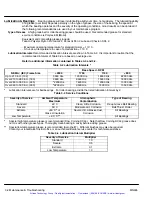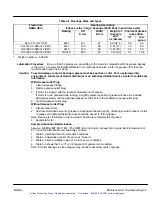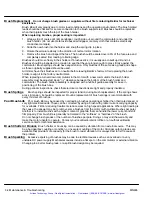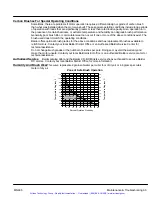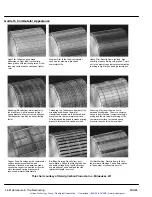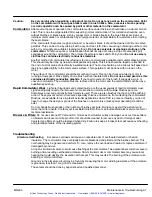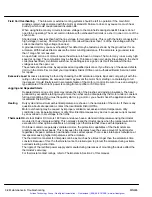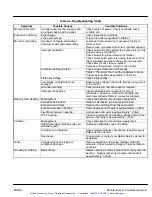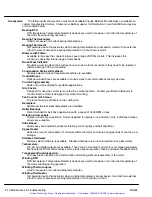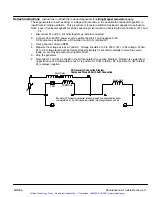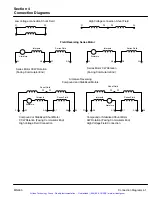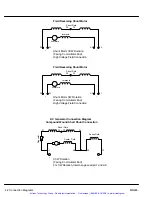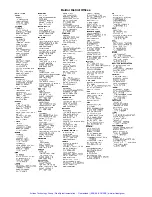
3-4 Maintenance & Troubleshooting
MN605
Brush Replacement
Do not change brush grades or suppliers without first contacting Baldor for technical
assistance.
Brush life will vary greatly due to motor load conditions and the operating environment. The brush pigtail
leads should be checked for secure connection to the brush support stud. Brushes should be replaced
when their pigtails touch the top of the brush holder.
When replacing brushes, proper seating is important!
1. Wrap a strip of coarse grit (60) sandpaper, rough side out, around the commutator and under the
brush holder. (Do not use metal oxide based sandpaper or emery cloth that contains electrically
conductive materials).
2. Slide the new brush into the holder and snap the spring clip in place.
3. Rotate the armature slowly in the direction of normal motor rotation.
4. Remove the brush and inspect the face. The brush should be seated over 90% of the face area and
completely seated from leading to trailing edge.
Brushes should move freely in their holders. If brushes stick, it is usually due to built up dirt and oil.
Brushes should be inspected on occasion to see that they are long enough to press firmly against the
commutator. Brush springs should have equal tension. Only brushes of the same size, grade and shape
as those originally supplied should be used.
All motors have their brushes set on neutral before leaving Baldor’s factory. After replacing the brush
holder, realign it to the factory neutral mark.
When replacing a turned-down commutator in the motor with a new commutator, the brush holder
assembly must be adjusted. Keep
1
/
16
″
clearance between the bottom of the brush holder and
commutator. The brush holder assembly is designed with a nut/bolt guide assembly for ease in
positioning of the brush-box.
During periodic inspections, check that electrical connections are tight and properly insulated.
Brush Springs
Brush springs should be inspected for proper tension during brush replacement. If the spring shows
a loss in tension, it should be replaced. Routine replacement of brush springs is recommended with
every third set of brushes.
Poor Brush Life
Poor brush life may be caused by overloading, brushes operating at higher than their rated speed, or
very light electrical loads. These can be corrected by using a brush with greater current-carrying capacity
for overloads. Friction-reducing treatments reduce wear on high speed applications. Where light loading is
the cause, the answer may be to remove some brushes from the motor (with multiple brushes per pole).
Another is to install brushes with a higher content of graphite that can handle the lower current and still
film properly. Poor brush life is generally not related to the “softness” or “hardness” of the brush.
Do not change brush grades or the number of brushes per pole. Doing so may void the warranty and
make the motor unsafe to operate. Contact your local Baldor district office or an authorized Baldor
service center for technical assistance.
Brush Chatter or Bounce
Brush chatter or bouncing can be caused by vibration from an external source. This may
be a bad gearbox coupling or condition, or insecure mounting of the motor. Stronger carbon grades are
available that provide more capacity for the brush to resist vibration. It is always best to fix the cause of
the problem.
Brush Sparking
Excessive sparking of brushes may be due to electrical causes such as an overload or a very
unstable DC power supply. Mechanical causes include a flat spot on the commutator or external vibration.
Changing to a better brush grade, or a split-brush design may be required.
Artisan Technology Group - Quality Instrumentation ... Guaranteed | (888) 88-SOURCE | www.artisantg.com













